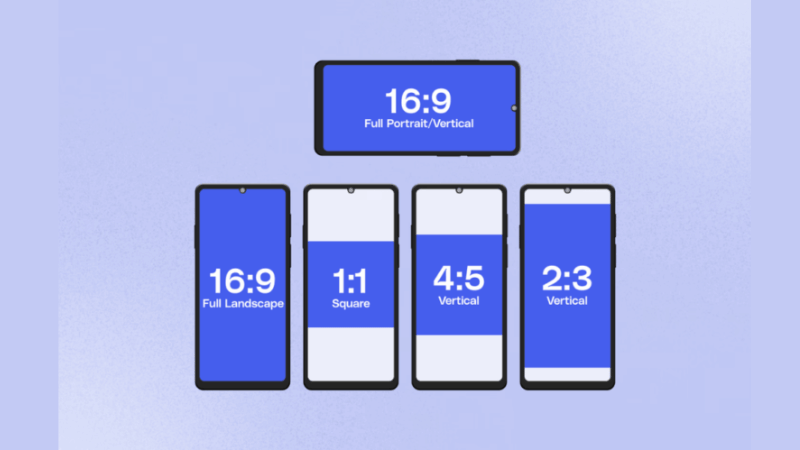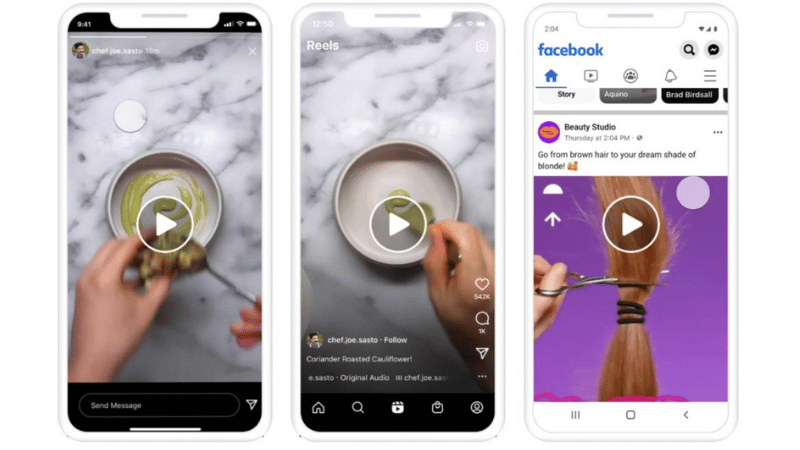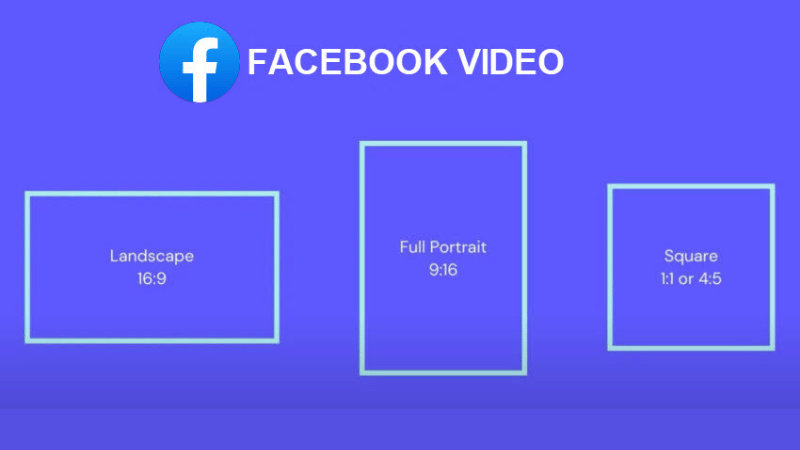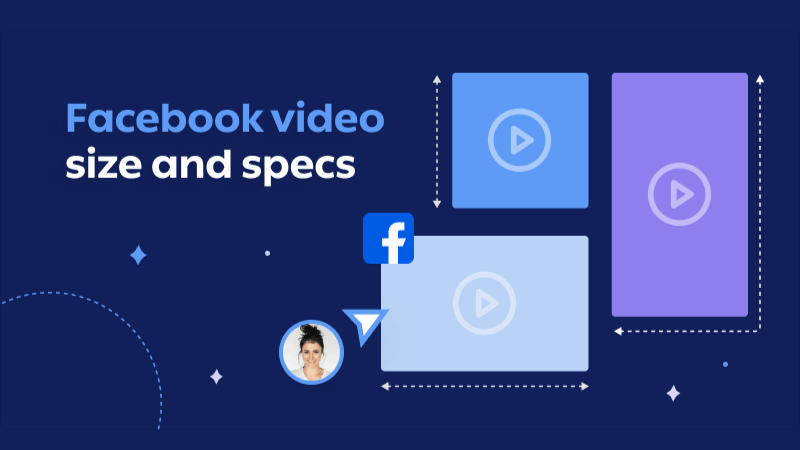If you’re still running ads with a square 1:1 format, you might be missing out on a lot of opportunities. Recently, Facebook has updated its new recommendations for image and video formats, helping you optimize your ad effectiveness more than ever. Previously, Facebook only suggested videos using a 4:5 or 9:16 ratio, but now even images on the feed can use a 4:5 ratio, a format that was previously only available on Instagram. In this article, Optimal Agency will guide you on video size for running Facebook ads, how to choose the right format for each ad placement, and the optimal aspect ratio so your Facebook Ads creatives always stand out.
Basic principles before adjusting your Facebook Ads Video size
First, we want to emphasize a principle that you and other advertisers should remember: the more placements a single creative appears in, the higher the ad’s effectiveness.

Many people often choose to create multiple variants of the same creative for each placement. For example, at the ad level, you might use a square image for the Facebook Feed and adjust it to a portrait image for Stories. However, through many real-world tests, we’ve found that one flexible creative that adapts to both square and portrait formats often delivers superior performance compared to splitting them into two different variants.
The reason is that when you manually create two variants, you are actually creating a Dynamic Creative Ad with multiple post IDs. This causes the data to be scattered and not centralized in a single ad. In contrast, if you use an adaptive creative, the ad will remain a single static post ID, so all the data from different placements is combined. Meta prioritizes this, so the ad’s effectiveness will be significantly higher.
For example, when we ran a video to promote a cosmetic product, we only needed to design one flexible vertical video version. That video displayed beautifully in Stories while also displaying neatly in the Feed. The campaign results grew by 20% compared to when we split it into two separate versions.
In addition, Meta now also recommends that you focus on creative diversity instead of just changing the aspect ratio. If you want to make the most of Stories, don’t just stretch the feed video to Stories; create an entirely new creative. For example, a full-screen vertical video with motion effects and a clear CTA. This approach helps you maximize the power of each ad format.
The most standard video size for running Facebook ads in 2025
When running ads, video size is always an important factor that advertisers are particularly interested in. A video with the right size not only helps increase the viewer’s experience but also ensures that the message is conveyed clearly and without being cropped.

A 4:5 Ratio for the News Feed helps capture full attention
For the Facebook and Instagram Feed, the 4:5 ratio (1080 x 1350 px) is considered the “gold standard.” It takes up more screen space than a square 1:1 photo, making it difficult for users to scroll past without noticing. Real-world examples:
- A clothing shop can post a 4:5 lookbook video so the products are displayed larger and more eye-catching when customers scroll through the News Feed.
- Instead of a square video, the 4:5 version helps the brand “occupy” more space and create a stronger impression.
A 9:16 Ratio for Stories to optimize the full-screen experience
When running Stories or Reels ads, a 9:16 ratio (1080 x 1920 px) is a mandatory choice. This is a full-screen vertical ratio, which helps customers fully focus on the content. Real-world examples:
- A restaurant can run a 9:16 Stories ad introducing a new dish. The video will fill the screen, making customers feel like they are directly experiencing the food.
- A cosmetics brand can use 9:16 UGC in the form of a review, creating a sense of closeness and authenticity.
Note on safe zones for important content
We always remind you to pay attention to “safe zones” when designing videos. This means:
- Don’t put text, logos, or people’s faces too close to the top/bottom edges, as they may be covered when displayed.
- If you only produce 9:16 videos for all placements, you need to make sure the important content is still neatly within the 4:5 area to display correctly on the Feed.
If you ignore these standards, your ads can easily lose their effectiveness or have reduced engagement. Conversely, if we optimize the size and safe zones correctly, your campaigns will certainly bring results that exceed expectations.
Aspect Ratios for Videos and images for running Facebook Ads
Choosing the right aspect ratio for your Facebook ad images and videos plays a very important role. It not only helps optimize the display on many placements, but it also enhances the user experience and increases campaign effectiveness. Here is a detailed guide for advertisers who want to run effective Facebook Ads.

Optimal aspect ratios for Facebook Ad Videos
When it comes to video advertising, the display size determines how much it attracts a customer’s attention. If you choose the right aspect ratio, the video will not only display beautifully but also help optimize ad effectiveness on many different devices.
1080 x 1920 (vertical – portrait)
This is the most optimal choice for Facebook ad videos in 2025. The vertical format takes up the entire screen of a mobile phone—the device that most Facebook and Instagram users use.
However, you need to note:
- Top and bottom areas: About 285px on each side can be cropped in some placements. You should not put important logos, products, or text in these areas.
- Bottom area: The bottom area of about 315px is at risk of being covered by the call-to-action (CTA) button or Facebook icons. Avoid placing captions or important content here.
1080 x 1350 (Instagram feed style)
- This is a fairly safe alternative that is not cropped. However, the bottom area can still be covered by the CTA button, so you still need to be careful when designing.
1080 x 1080 (square)
This is becoming less and less effective because it takes up a smaller area. In addition, there is a “danger” area of about 170px at the bottom that is easily covered.
Optimal aspect ratios for Facebook Ad Images
Not just videos, ad images also need to be designed with the right ratio to display prominently and convey the full message. Choosing the wrong size can cause the image to be cropped, covered, or reduce its aesthetic appeal.
1080 x 1350
This is the current standard for the Instagram feed and is well-supported by Facebook for display.
- Note: It can be cropped by 135px at the top and bottom, so don’t put important headlines or text in these areas.
1080 x 1080 (square)
This is the safest size because it displays stably in all placements. However, it is less effective than 1080 x 1350 because it takes up less display space.
1080 x 1920 (vertical – portrait)
This is not recommended for static images. This size is easily cropped in many placements and also has a covered area at the top and bottom. The images are often unbalanced and display poorly.
How to create Video ads on Facebook that Scale strongly in 2025

When it comes to video ads on Facebook, many people immediately think of the editing process. However, we believe that 80% of the success of an effective video comes from the preparation stage before opening any editing software. The first and most important step is customer research.
Our goal when researching is to truly understand one single target file: potential customers. When we know what they care about, what they worry about, and what they want, we can easily shape the content we need to say to convince them to take action and spend money.
Based on our experience in implementing hundreds of campaigns, we have found that there are 3 important factors to focus on: Desire, Awareness, and Sophistication. This is the foundation that helps advertisers position their products, create a strong hook, and turn viewers into real customers.
Desire
Desire is what the customer is thinking about. In other words: “What do people care about?” When we understand their desire, we can easily create a hook for the video:
- Visual hook: For example, a shot of yellowed teeth turning white and bright in a few seconds, which is attractive from the very first frame.
- Text hook: For example, the text “Want to double your orders in just 7 days?” pops up right on the video.
We often emphasize to you that a hook must both touch on a need and evoke curiosity to make viewers stop and continue watching.
Awareness
Another equally important factor is measuring the customer’s level of awareness. This is how we know if they are close to or far from your product. For example:
- If you ask, “Does anyone need a 5,000 MHz ultrasound machine?”, very few people will be interested.
- But if you ask, “Does anyone want to have smoother, brighter skin?”, a lot of hands will be raised.
From there, we will know how to build the content:
- If the customer doesn’t know yet: start by stating the problem → the solution → the product.
- If the customer already knows the solution: just introduce the product and the reason they should choose you.
- If the customer already knows the product: focus on a strong call to action.
Sophistication and differentiation
In a fiercely competitive environment, your product or ad needs to have a standout feature. That is the USP (Unique Selling Proposition)—the unique selling advantage. The USP can come from the creative, the offer, or the product itself. Examples of different levels of sophistication in advertising:
- Level 1: Basic claim – “How to expand Facebook Ads.”
- Level 2: Exaggerated claim – “Expanding Facebook Ads to reach $30,000/day.”
- Level 3: Introducing a new mechanism – “Applying AI in UGC Ads.”
- Level 4: A better mechanism – “AI UGC Ads are 3 times more authentic.”
- Level 5: New identity/sub-niche – “Facebook Ads optimized specifically for high-ticket Ecom.”
We often advise advertisers to ask themselves the question: “What makes my product more memorable than the competition?” The answer is the key to creating a sustainable competitive advantage.
Combining the 3 elements to write an effective Video script
After identifying the desire, awareness, and differentiation, we can build a coherent script. The hook needs to ensure that it:
- Provides a subtle benefit to the viewer.
- Evokes curiosity.
- Targets the right ideal audience.
For example, with a teeth whitening product, you can start with a visual hook (a close-up of a stained smile → a white and bright smile in just 5 seconds), then lead the customer on their journey of awareness, repeat their desire many times, and end with a clear call-to-action such as “Order today to get a 50% discount.”
During the writing process, we always ask ourselves: “Would the customer agree with this sentence?” If not, the next sentence must immediately provide the answer. After you have the draft, edit it to increase its persuasiveness, remove superfluous details, and ensure that when read aloud, the script sounds natural and attractive.
Adhering to the correct video size for running Facebook ads will help you and other advertisers ensure a beautiful display experience, increase the ability to attract viewers, and optimize campaign effectiveness. Always stay up-to-date with the latest standards so your ad content stands out and brings the best results.
Frequently Asked Questions
Videos with this aspect ratio will display well on both mobile and desktop devices. This helps the ad content attract the user’s attention. Furthermore, this aspect ratio is also suitable for a lot of content in ad videos. It is also recommended by Facebook because it displays better on the News Feed and Instagram. However, using any specific aspect ratio for an ad video will depend on the ad content and the target audience you want to reach.
The aspect ratios that Facebook recommends for ad videos are 16:9, 1:1, or 4:5. If you use a different ratio, the video may be cropped or display incorrectly on some devices. To ensure that the quality of the ad video is the best, use an aspect ratio that is suitable for the content and design of the ad video.